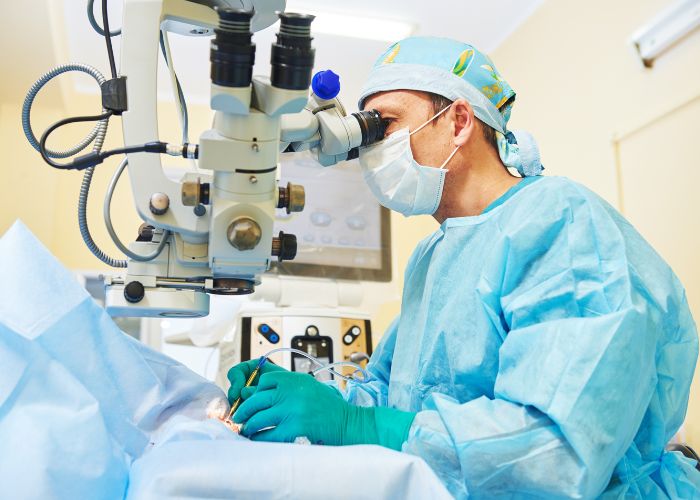Advancements in laser technology have revolutionized modern medicine. Doctors now use precise, minimally invasive techniques to perform various surgeries, enhancing accuracy and often reducing recovery time. Below, we’ll explore the most common types of laser surgery procedures, their applications, and why they have become indispensable in healthcare.
LASIK and PRK
Laser eye surgeries, such as LASIK (Laser-Assisted in Situ Keratomileusis) and PRK (Photorefractive Keratectomy), are among the most well-known laser procedures. These treatments correct refractive errors, including nearsightedness, farsightedness, and astigmatism.
A surgeon reshapes the cornea using an excimer laser to correct the way light enters the eye, ultimately improving vision. LASIK typically involves creating a flap in the cornea, while PRK works directly on the corneal surface. Some studies are suggesting that over 95 percent of patients who undergo LASIK achieve 20/40 vision or better, making it one of the most reliable options for vision correction.
Laser Skin Resurfacing
Laser skin resurfacing has gained immense popularity among dermatologists for its ability to improve the skin’s texture, reduce wrinkles, and treat scars. This procedure involves removing the outer layers of damaged skin, encouraging the growth of smoother, healthier skin cells.
Ablative lasers, like CO2 and erbium lasers, are effective for deeper skin concerns, while non-ablative lasers target underlying layers for milder rejuvenation. Dermatology clinics often note significant patient satisfaction, as results are visible within weeks and require minimal downtime.
Laser Hair Removal
Laser hair removal is a go-to option for patients seeking a long-term solution for unwanted hair. This procedure targets hair follicles using selective photothermolysis, where the laser’s light energy converts to heat and destroys the follicle without affecting surrounding skin.
Practices offering this service highlight its appeal, as patients often require only a few sessions for noticeable results. Modern lasers also cater to a variety of skin tones and hair types to ensure a broader range of compatibility than in earlier years.
Laser Cataract Surgery
Cataract surgery has long been a critical procedure in eye care, and laser technology has only enhanced its efficiency and precision. Laser cataract surgery employs femtosecond lasers to create precise incisions and soften cataracts for easier removal.
Unlike traditional methods, lasers allow ophthalmologists to map the eye in real-time, which increases accuracy. Patients often experience improved visual outcomes alongside shorter healing periods.
The Advantages of Laser Surgery
Laser surgery often raises concerns among patients regarding safety or cost. Healthcare providers must emphasize that lasers are highly precise and minimally invasive and reduce the risk of complications, promoting quicker recoveries.
Clinicians who stay updated on these innovations enable their practices to grow while offering patients cutting-edge care. Making an investment in understanding and using these solutions will inevitably deliver better patient outcomes.
Laser surgery procedures continue to shape the future of medicine, offering versatility, accuracy, and less invasive alternatives for various conditions. With this technology becoming increasingly commonplace, there has never been a better time to expand your expertise in these advanced treatments.


















Leave feedback about this
You must be logged in to post a comment.